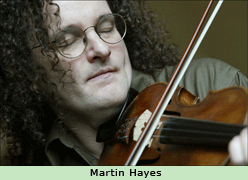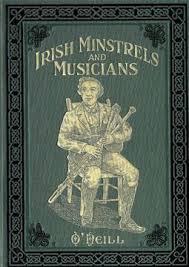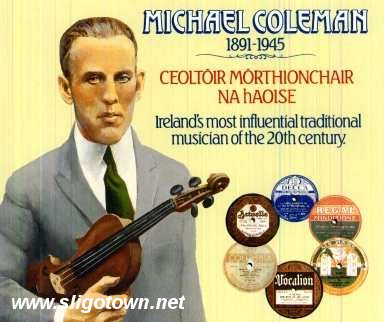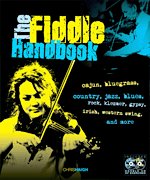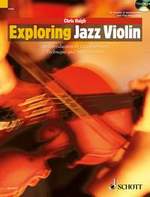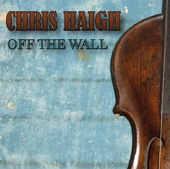
MENU TO FIDDLE STYLES:
VISIT THE FIDDLE CHANNEL FOR FREE FIDDLE LESSONS, TUTORIALS, AND WORKSHOPS!
REGIONAL STYLES IN IRISH FIDDLE MUSIC- FACT OR FICTION?
SEE THIS ARTICLE AS VIDEO ON THE FIDDLE CHANNEL:
However, the concept of regional style is a controversial one, which some regard as simplistic at best, and a cheap marketing ploy at worst. In this article I shall look first at the question of what constitutes style in fiddle playing, and describe the characteristics of style in different parts of Ireland. We’ll trace a very brief history of Irish traditional music, and show how local styles may have given way to a national style. I’ll look at the pressures which have eroded regional style, and those which are helping to maintain it. Finally, I’ll look at the thorny question of what this all means to someone who wants to play authentic Irish music, but whose background is in no way related to the country.
What constitutes style?
If you’ve ever had the pleasure of seeing a classical violinist attempting to play an Irish jig, you’ll be aware that there’s more to the music than just the notes that you might read on the page. There are many details of performance which are all in their own way different interpretations of the basic tune. Such details include ornamentation, bowing, phrasing, articulation, intonation and tempo. There is also choice of repertoire; of the thousands of tunes available each individual player will regularly play a small fraction. Irish traditional music as we know it was mostly created in the 18th and 19th centuries, in a rural setting where most of the population travelled no more than a few miles from their home village. Music was learned by ear, mostly from parents, family or friends. The elements of style outlined above were therefore passed down the generations with relatively little change or innovation. With no mass media, a player in one part of Ireland was unlikely to experience the style of one from the other side of the country. The only regular medium for mixing of style and repertoire was the dancing master or the few travelling musicians who made a living doing a circuit, playing for dances and teaching in people’s houses- and even these individuals would have been relatively localised in their travels. The principles of Darwinian evolution, aside from the bits about sex and being eaten, apply neatly to musical style, so it is no surprise that local factors such as the preference for particular dances, the influence of particular gifted individuals, or the presence of outside influences, would lead to a differentiation of style around the country; whilst in one village the fiddlers might play reels at a particular tempo, on the other side of the hill they might play them slower. A parallel is often drawn with spoken dialect, which, at least until late in the 20thC, formed a rich mosaic of distinctive forms of speech across the whole of the British Isles.
In Ireland this analogy breaks down somewhat, in that distinct fiddle styles can only be recognised in certain parts of the country. For historical reasons (ok, blame the Brits!), there is little in the way of fiddle tradition in the east of Ireland. If there is such a thing as a Wicklow, Meath or Kildare style, I have yet to hear of it. It is in the rural south, west, and northwest corners of Ireland where Gaelic traditional culture survived best. So what are the regions with the richest surviving fiddle styles, and to what extent are particular individuals significant within that style?
Regional Styles
County Clare, on the west coast certainly has one of the strongest fiddle traditions. It is marketed to foreigners as “the home of traditional music”, and Doolin and Ennis are the two top destinations for musical tourists. Clare fiddlers are noted for slower tempos, a lyrical, relaxed feel, fluid bowing, the use of lots of rolls, and a favouring of lower, darker sounding keys such as G, Gm and C and Dm. Fiddlers often tune the whole fiddle down to emphasise this deeper tone. Sensitive dynamics, a rare feature in traditional music, is also heard.
A particular feature of Clare fiddling is what is often called the “lonesome touch”. This is a combination of frequent sliding up to notes, and a distinctive use of the untempered scale, with neutral thirds and sevenths. This feature is best heard in the playing of Paddy Canny (1919-2008), on his album “Paddy Canny: Traditional Music from the Legendary East Clare Fiddler”. Canny is often spoken of as the epitome of East Clare fiddle, but he was a distinctive player, who created his own style based on certain outside influences, as well as the tradition which surrounded him.
Born into a strongly musical family in Glendree, he started out playing at crossroads and house dances, and, along with fiddler PJ Hayes and others, was a founder member of the legendary Tulla Ceili Band in 1946. He was all-Ireland fiddle champion in 1953, and in 1959 appeared on one of the first home grown traditional music albums in Ireland “All Ireland Champions-Violin”. His personal style was influenced by the maverick fiddling of Tommy Potts, a remarkable Dublin musician who freely embraced elements of jazz, classical and pop music in his playing.
Both Canny and Potts have in turn influenced one of the stars of the current Irish scene, Martin Hayes. Martin is the son of the aforementioned PH Hayes, and before moving to the US he played in his youth in the Tulla Ceili band. Like Canny, Martin Hayes has developed his own style, incorporating elements of local style along with outside influences. Long bows and smooth rolls are a feature of his style, and Hayes has developed a trademark “double roll”, which you can hear for example on The Morning Star from his 1992 “Martin Hayes” album. Careful and deliberate slides up to notes, and sometimes the flattening of a note to give an almost blues effect can be heard throughout his playing- this is a key element of what is referred to in Clare as the Lonesome Touch- a plaintive, wistful effect after which he named his 1997 album. This album is also remarkable for the very slow tempo of many of the tunes, giving an effect more suited to meditation than dancing. Syncopation- the anticipation of a melody note, is a common feature of his playing, as is the creation of many subtle variations in both ornamentation and melody. His Welcome Here Again (2008) abandons the modern convention of playing tunes in sets (as would suit a ceili band or a session); instead he plays single tunes, stating the melody clearly a couple of times, and going numerous times round again, developing and shaping the tune as he goes.
If Hayes and Canny represent the East Clare style, some also recognise a West Clare style, as seen in the playing of Bobby Casey, Junior Crehan, Patrick Kelly and John Kelly.
Donegal, on the north west coast, has one of Ireland’s most distinctive fiddle styles. The principal reason for this is its frequent contacts with Scotland, particularly with Donegal agricultural workers crossing the sea for the Scottish potato harvest. This influence is plain for the repertoire, which contains tune types such as strathspeys, Highlands, Germans and Mazurkas, all rarely seen further south. Echoes of the highland bagpipes are heard in the frequent use of bowed triplets (trebles), and in the abundance of tunes in A; being played on the upper strings this contributes to a bright sound overall. Brisk tempos, a fierce attack, and the use of many separate bows are also features commonly associated with Donegal fiddling.
One of the earliest Donegal fiddlers to be heard on record was Neilidh Boyle (1889-1961), who appeared on radio and gramophone in the 1930’s. The musician most often associated with Donegal fiddle is the traveller and tinsmith John Doherty, who could trace his musical ancestors back to the Flight of the Earls in 1607. Doherty’s overall style certainly sometimes fits the stereotype with regard to bowing; he used powerful, separate staccato, even bows but he also had various sophisticated and highly original bowing techniques such as the “floating bow” after which his best known album is named.
There were also many distinctive feature to his playing; his ability to use high positions and difficult keys; his use of scordatura for uncanny bagpipe imitations, and his technique of “feathering” a type of vibrato produced by vibration of the bow hand rather than the left hand. He sometimes used a spiccato bouncing bow.
Other Donegal fiddlers include one- time Bothy Band member Tommy Peoples, regarded as the master of the bowed treble, but so distinctive in the density of his ornamentation that he is rarely regarded as a representative of the Donegal style.
Mairéad Ní Mhaonaigh of the band Altan has also done much to popularize the distinctive Donegal repertoire
Down in the south west lies Sliabh Luachra (sleeve-lu cra-The Rushy Mountain)- an area of Kerry, Limerick and north Cork lying in a triangle between Ballydesmond, Rathmore and Castleisland. The repertoire of this area is particularly distinctive, with a great number of polkas and slides; this relates directly to the popularity of dances using these tunes. Open string drones are common among fiddlers, as is “doubling” (where two fiddlers play a melody in unison octaves) . The tunes are relatively unornamented.
Padraig O’Keefe (1887-1963) was a significant player and teacher; among his pupils were Denis Murphy and Julia Clifford, who together recorded what many regards as the definitive sliabh luachra album Star above the Garter in 1968. One of the best contemporary fiddlers in this style is Matt Cranitch of the band Sliabh Notes, known not only for his fine playing, but also his fiddle books. He is a particualry noted exponent of the playing of slow airs- another common feature of the region.
Anther region said to have a distinctive fiddle style is Sligo, described as being bouncy and full of “lift”; the most noted exponents being the Great Michael Coleman who, along with others such as James Morrison and Paddy Killoran, took the boat to America in the early 20thC and featured on highly influential recordings. Kevin Burke is regarded as a current exponent of the style.
So What’s the problem?
So far so good. The fiddle styles described above are well documented and their descriptions frequently appear in print, not least on the sleeve notes and promotional material of touring artists. However, there is also a constant artificially. One problem is that, until the broadcaster Sean Ó Riada proposed the idea in his “Our musical Heritage” series in 1962, no one had even noticed that such a thing existed. Francis O’Neill’s Irish Minstrels and Musicians (1913)- a wide ranging and detailed look at traditional music in Ireland, made no mention of regional variation.However, there is also a rumbling of discontent, from critics who say that regional style is an entirely modern invention, and that if it ever really existed, it is now maintained artificially.
It has also proved remarkably difficult to go beyond broad, sweeping generalizations and give precise descriptions of individual styles or their geographical boundaries. On the one hand, the delineation of Donegal as a musical region is undermined when numerous local subdivisions are postulated- on the other hand the borders of Sliabh Luachra seem to have mysteriously expanded as the style has become increasingly popular in recent years. It is easy to point to a key player such as John Doherty, and say that he represents Donegal, but it is equally easy to find a dozen other players from the same area who sound nothing like him. Inevitably, the star players are individuals whose technique, musicality and breadth of vision sets them apart from the players around them.
Sally K Sommers Smith, in 1997, postulated that regional differentiation , far from being as old as the hills, did not begin until the second half of the 19thC. Until the potato famine, there was sufficient population and movement for there to be a continuity of musical culture throughout the country; any variations were gradual over the full width of the country, rather than falling in distinct regions. It was the depopulation caused by the famine which, according to Smith caused musical styles to shrink into separated areas.
This gives little more than half a century before new factors began to remove forever the conditions which had created these local or regional variations. Interest in traditional music was already in steep decline when O’Neill visited Ireland in 1906. On visiting Clare, he was relieved to observe his "unexpected delight of finding, in the vicinity of Feakle, so little evidence of the musical decadence which is so noticeably affecting the spirits of the people in other parts of Ireland."
The Michael Coleman effect
The recordings of Michael Coleman in the 1920’s had a huge effect on the remaining traditional musicians in Ireland. The most positive was the inspiration they gave to fiddlers, many of whom spent many hours playing them over and over in order to learn the fine details of his ornamentation and variation. The most negative effect is that many fiddlers, who had never heard more than a handful of different musicians in their lives, realized how far below the bar was their own standard of playing, and simply gave up. Coleman is also often cited as the man who destroyed regional style. His own bouncy, highly ornamented style, roughly representative of Sligo, was suddenly the only style anyone wanted to hear or learn- it became the basis of a new “national style”.
The spread of radio and gramophone recordings and improvements in travel began to reduce the cultural isolation of rural Ireland, while the Public Dance Hall act of 1935, and the spread of ceili bands, with their regimented and metronomic sound, were further nails in the coffin for regional variation.
The 1950’s and 60’s saw the beginning of a revival ; Comhaltas Ceoltóirí Éireann-CCE or just Comhotas (Coal-tas) was formed in 1951 as a society to preserve and promote traditional music. They began organizing festivals or fleadhs (flah), an important feature of which was a series of contests for singers, dancers and instrumentalists. The fleadh has become an international institution, with over 20,000 people competing every year. There are three levels of competition; county level; Province level (Ulster, Connacht, Leinster and Munster), and the national (all Ireland) level. As the ultimate revenge for its colonial past, England is considered a province of Ireland, while the US counts as two provinces. Performances are marked by a panel of judges, and one of their key criteria is strict adherence to traditional style.
The big question is, what style? How do you compare the fierce driven bow of a Tommy Doherty with the smooth meditative lyricism of a Martin Hayes? The chief, and very frequently voiced criticism of Comholtas is that they have created a national fleadh style which excludes any trace of regional style, along with innovation and creativity. Although Hayes carried off the All Ireland twice, he did so by playing straight down the line, rather than by demonstrating the genius of his personal style. Comholtas style is variously described as homogeneous, bland and generic.
The Sligo flautist Seamus Tansey, speaking on the RTE programme on regional style, Canúintí Ceoil, pulled no punches:
“if the different regional traditions die out, as they are at the moment, well, Irish music is dead. You’ll have some other thing representing Irish Music. You’ll have a stereotyped revivalism which ceoltas are doing, where everyone is doing and playing the same from Cork to Donegal…you’ll have about 5 or 600 Joe Burkes, you’ll have about 1000 Tommy Peoples…and you’ll have 2000 Matt Molloys. All playing very nice, technically beautiful music but it’ll be all the bloody same”
The folk revival as a whole has been an urban rather than a rural phenomenon, with musicians traveling long distances to meet and play together. One side effect of the creation of the fleadh was the spread of the traditional pub session in Ireland- a phenomenon which previously had been mostly seen in London. Sessions, whilst accepting a degree of cacophony, are ideally about playing together; variations in tempo, intonation, key or setting are all unhelpful to say the least in a session environment. In London, the USA or anywhere else where sessions happen, there is no chance that the players will all be from the same part of Ireland. If they are of Irish descent, they will probably represent a number of different counties, and many of them will probably have no Irish links at all. This leads to not merely a national, but an international style. For musicians learning in the 21st century, the old idea of learning from your parents and neighbours is dead in the water. Apart from sessions there are CD’s, radio broadcasts, youtube clips, touring bands, workshops, tutor books (curse them all!)- these are the sources from which people learn their fiddle style today.
The future of Irish regional style
So how, in the current environment, can any vestige of regional style survive? The fact is that, as soon as O’Riarda came up with the idea in the 1950’s , it was a winner. As with any form of folk music, it is not just the music itself that people find attractive. Taken in isolation it is meaningless. Like the tango with dockside Buenos Aires, Hot Club Jazz with prewar Paris, or Old time music with the backwoods of Applachia, Irish traditional music is forever tied in the mind to a sentimental picture of the lost lifestyle of rural Ireland. Identity, authenticity, continuity, a sense of time and place- these are all essential concepts to anyone who is a serious performer of Irish music. You will scarcely hear a concert, or read a CD inlay, without hearing that the performer learned this tune from Paddy O’Sullivan of County Clare, or Johnny McSweeney whose mother got it from…you get the picture.
The concept of regional style is a way of tying the music, the performance, the tune, to a particular place in Ireland, rather than just being “From Ireland” or “From O’Neill’s”. Like quality food from a farmers’ market, traditional music that can say on the label exactly where it came from is of considerably more value to the discerning consumer than an anonymous horsemeat- ridden pre-cooked “beef” lasagne of a tune. So, as the revival has continued into the 21st century, regional style has become an essential part of the packaging and marketing of Irish music. Altan is as firmly tied to Donegal as Sliabh Notes are to Sliabh Luachra, or Martin Hayes to East Clare. Traditional style has reinvented itself. It is no longer propagated by isolation and one-to one transmission. Today the music of Clare is taught to people from all over the world at the Willy Clancy Summer School in Ennis or at the Boghill Centre in Kilfenora; it is heard and learned by people anywhere, who might never have been to Ireland in their lives. Anyone who goes on the journey of learning this music will start out regarding it as a single, homogeneous genre, but if they stick at it they will almost inevitably begin to delve into the finer detail and exquisite nuances of particular localities. Whether or not it existed in the past, and despite all the forces lined up against it, Regional style is here to stay.
